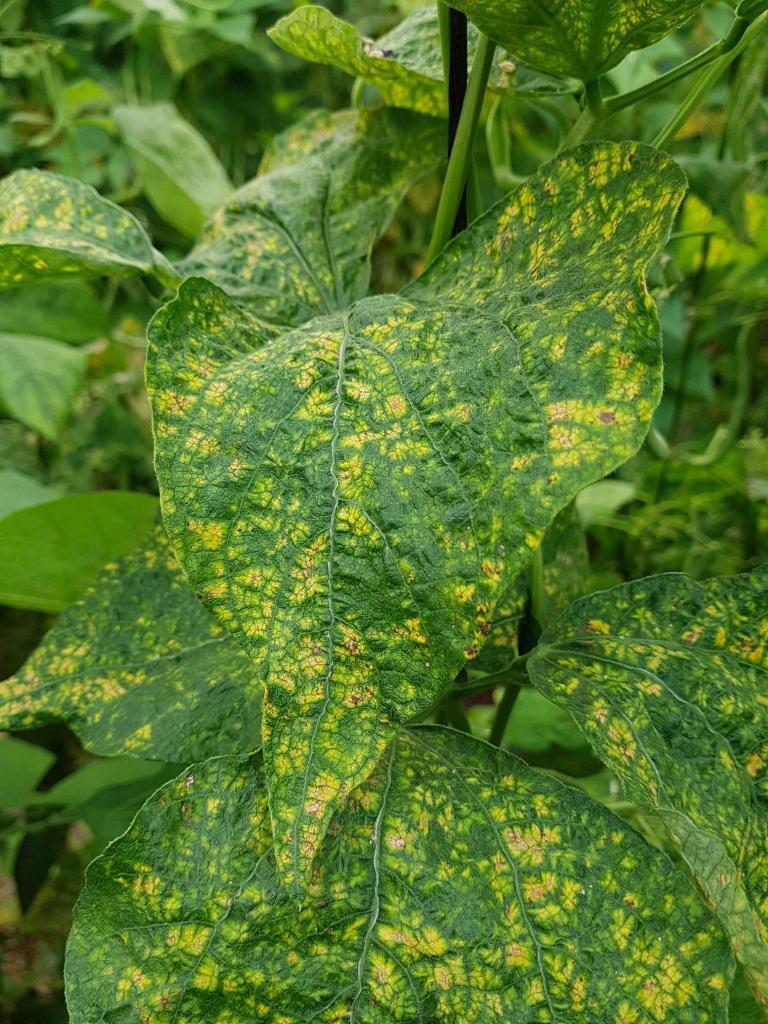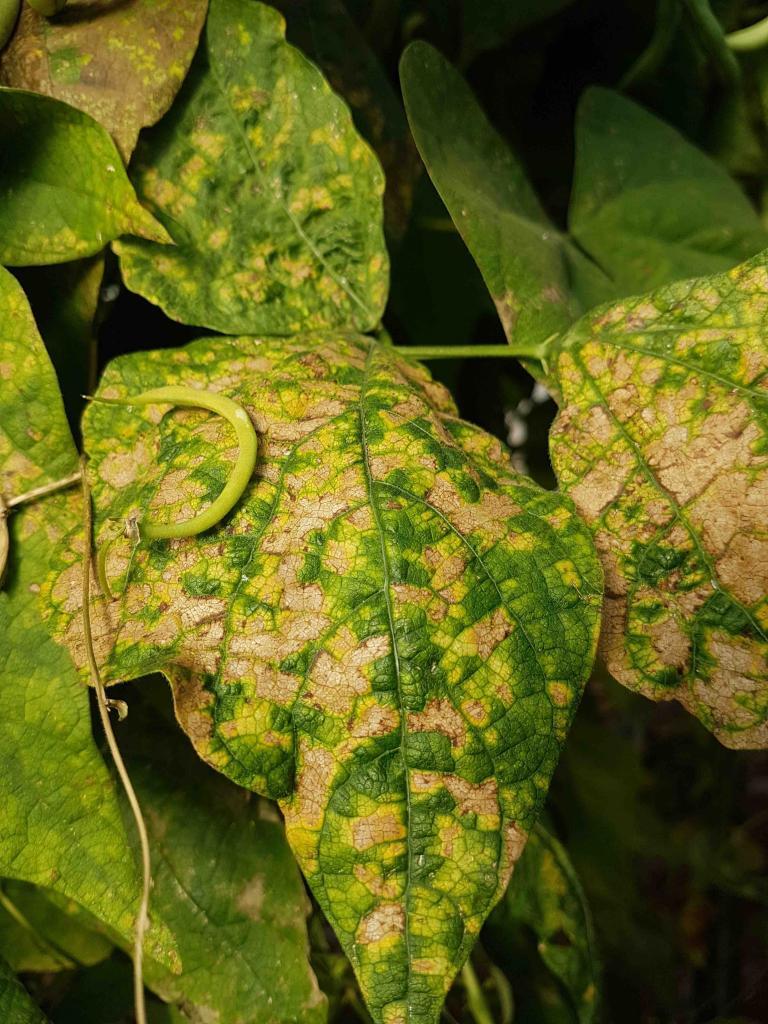Bean Golden Mosaic Virus
Beans
BGMV is of the genera begomovirus of the Geminiviridae family. BGMV is transmitted by whiteflies (bemisia tabaci) after they feed on infected plants and introduce the virus to adjacent plants. It is common around the world in bean growing regions. Infected bean plants will exhibit yellowing, downward curling and deformation of leaves, and a yield reduction.
There are no treatments for viruses. Infected cucurbits plants cannot be cured; therefore, the focus should be on prevention.
*Use plant varieties and seeds that are resistant to the virus.
*Grow Inside Structures: Keep the structure closed and the nets free of holes.
*Sanitation: Remove weeds. Several kinds of weeds can act as hosts that allow the virus to remain present between seasons. It can contaminate crops in the following season and make the virus control difficult.
*Use pest monitoring techniques such as yellow sticky traps to aid in keeping track of the whitefly population.
Preventing and stopping the spread of BGMV is done by focusing on controlling whiteflies, which can be difficult since a whitefly population can quickly develop a resistance to conventional chemical treatments.
The following insecticides are used in one or more parts of the world: cypermethrin, deltamethrin, bifenthrin, diafenthiuron, thiamethoxam, imidacloprid, acetamiprid, spiromesifen, buprofezin, cyantraniliprole, spirotetramat, and synthetic terpenes extract of chenopodium.
Azadirachtin, Fatty acid potassium SAL, Beauveria bassiana strain GHA, neem oil, and other plant oils
Amblyseius swirskii is a commercially available predatory mite that is capable of significantly controlling a whitefly population.
Try to avoid frequent use of organophosphate, carbamates, or pyrethroids insecticides; they will eliminate natural whitefly enemies and pollinators.
*Names marked in red are considered to be highly poisonous to beneficial insects.
*Names marked in green are considered to be organic and IPM (integrated pest management) compatible.
*Names marked in red are considered to be highly poisonous to beneficial insects.
*Names marked in green are considered to be organic and IPM (integrated pest management) compatible.
Image Gallery


